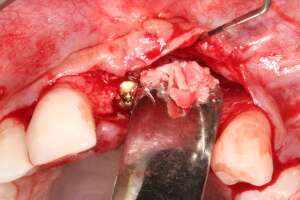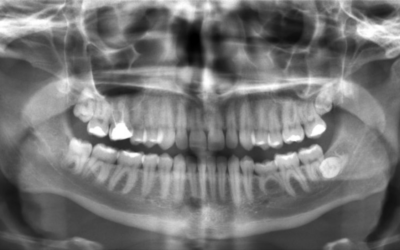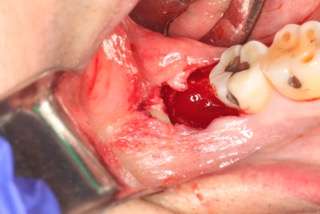5 Serious Complications from Impacted Wisdom Teeth
The very last molars at the back of the mouth are called “wisdom teeth” because they tend to emerge much later than other teeth, typically in the late teens or early 20’s. Some scientists believe that these late-blooming teeth exist because our ancient ancestors had longer skulls and jawbones that could accommodate the extra teeth. Unfortunately, up to 85% of today’s adults typically need to have one or more of these teeth removed due to complications. Essentially, if one of the wisdom teeth doesn’t have enough room to emerge, it may twist, tilt or displace other teeth in an attempt to make room.
The CENTER for Advanced Periodontal & Implant Therapy offers an innovative wisdom tooth removal treatment with advanced platelet-rich fibrin to assist with healing and dry socket prevention. This cutting-edge stem cell treatment improves healing and reduces the risk of complications. Contact our Los Angeles periodontists about this ground-breaking treatment today!
What are the Signs of an Impacted Tooth?
It’s important to note that not everyone needs to have their wisdom teeth removed, particularly if the teeth do not cause any negative symptoms. The risk of complications is so high that many dentists recommend removing wisdom teeth as a preventative measure as early as possible. However, everyone’s teeth and gums are different, so it is crucial to have regular check ups and evaluations to monitor when your wisdom teeth come in and whether there are risks of becoming impacted.
The signs and symptoms of an impacted tooth can be subtle and take months to develop, in some cases. The most common signs and symptoms include:
- 1. Tooth Pain: An impacted tooth can cause throbbing pain as the teeth push against each other. This pain may remain local or begin to radiate to the surrounding area.
- 2. Gum Issues: Impacted teeth can also cause serious gum issues, such as swelling, tenderness, and bleeding. When too many teeth are crowded into one spot, they can pinch or stretch the gums uncomfortably, which can also make brushing and flossing both painful and difficult.
- 3. Crowded Teeth: Wisdom teeth can actually push the teeth around them as they try to emerge. This can push adjacent molars out of their place, leading to significant crowding, which can lead to a wide range of issues, such as a misaligned bite, difficulty brushing and flossing, gum disease, and infections.
- 4. Gum Disease: Impacted teeth significantly increase the risk for infection and decay, which can lead to serious mouth issues. If a wisdom tooth is impacted, it can be very difficult to keep food and bacteria from becoming trapped and developing gum disease and tooth decay.
- 5. Cysts: In very rare cases, an impacted wisdom tooth can develop a growth called a cyst. Wisdom teeth grow within a sac, which is located within the interior of the jaw. Once the wisdom teeth become impacted, the sac can become irritated and fill with fluid and create a cyst. These growths can damage nerves and the surrounding teeth and cause tooth pain.
How Wisdom Teeth Are Extracted
Our periodontal experts can perform wisdom teeth removal with both IV sedation therapy and local anesthetic in order to make the treatment painless and stress-free. IV sedation keeps you completely relaxed and comfortable, while also allowing you to stay awake during the procedure.
The type of tooth extraction procedure will depend on whether the wisdom tooth has broken through the gum tissue, is still beneath the surface of the gums or is impacted. With simple extractions, the entire tooth is removed in one piece. With more complex issues, a surgical extraction may be needed. In most cases, a small incision will be made along the gum and the tooth is separated into several pieces in order to remove it from the tissue.
Preventing Complications with PRF
 While removing a wisdom tooth is typically a safe procedure, complications can arise. One of the biggest complications that may arise after a tooth extraction is the occurrence of dry socket. After an extraction, a blood clot naturally forms to protect the remaining hole. Dry socket, also known as alveolar osteitis, is a condition that occurs when the blood clot prematurely dislodges or dissolves, leaving bone and/or nerves exposed. This can lead to further pain and possible infection.
While removing a wisdom tooth is typically a safe procedure, complications can arise. One of the biggest complications that may arise after a tooth extraction is the occurrence of dry socket. After an extraction, a blood clot naturally forms to protect the remaining hole. Dry socket, also known as alveolar osteitis, is a condition that occurs when the blood clot prematurely dislodges or dissolves, leaving bone and/or nerves exposed. This can lead to further pain and possible infection.
Advanced Platelet-Rich Fibrin (PRF) can be used as an effective dry socket prevention method. The PRF technique uses the patient’s own blood to create a protective membrane made up of white blood cells and platelets. When applied to the extraction site, PRF jump-starts tissue growth and accelerates healing.
Not only will this reduce recovery time but it will also decrease the risk of developing dry socket and further complications following the tooth removal.
Learn More about Advanced Periodontal Treatments Today!
Dr. Alexandre Aalam is one of the first periodontal experts in the United States to train in the cutting-edge PRF technique and regularly performs this dry socket prevention method for his patients. If you have impacted wisdom teeth or would like to learn more about tooth removal with Advanced Platelet-Rich Fibrin, contact our Los Angeles periodontist office today to learn more!
You May Also Like...
Wisdom Teeth Bothering You? Here’s When You Should Get them Out
Let’s face it. There’s comes a time when your wisdom teeth just might need to come out. After all, through evolution,...
What are the Dangers of Dry Socket?
When having a tooth extracted, whether an impacted wisdom tooth or making room for overcrowding teeth, one of the main...
Make Your Wisdom Tooth Removal Easy with No Dry Socket
The thought of having a tooth removed can be unsettling to say the least, but a wisdom tooth extraction is...



